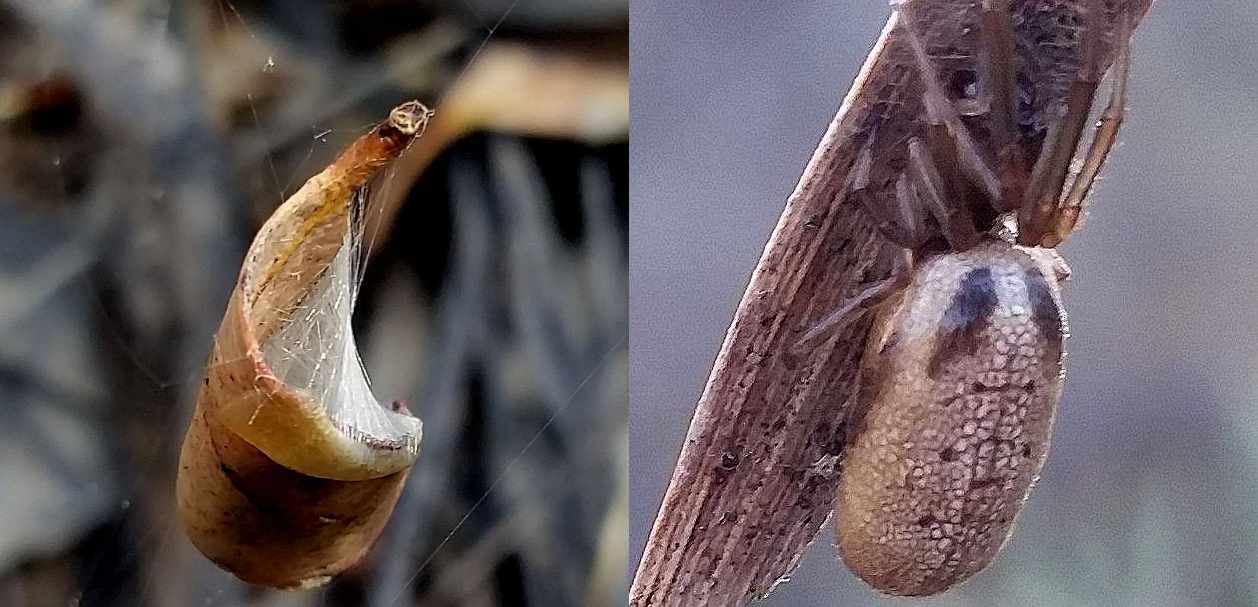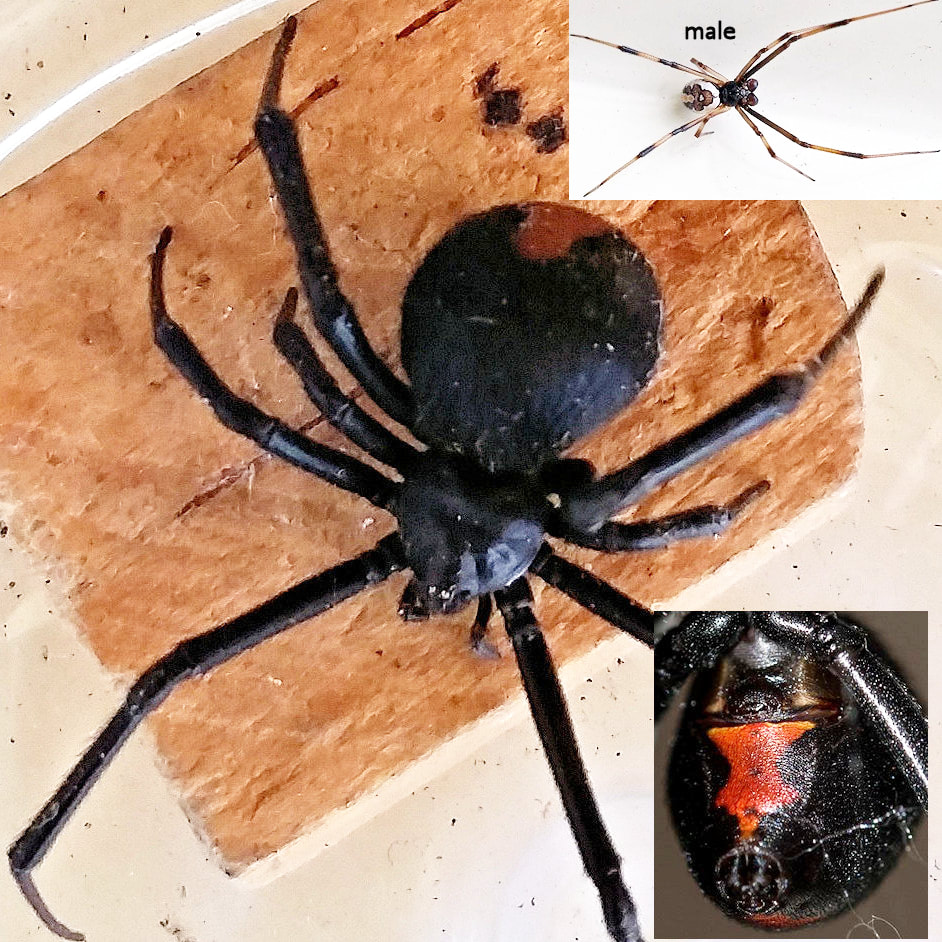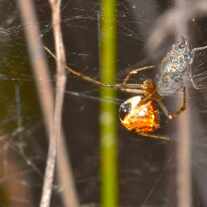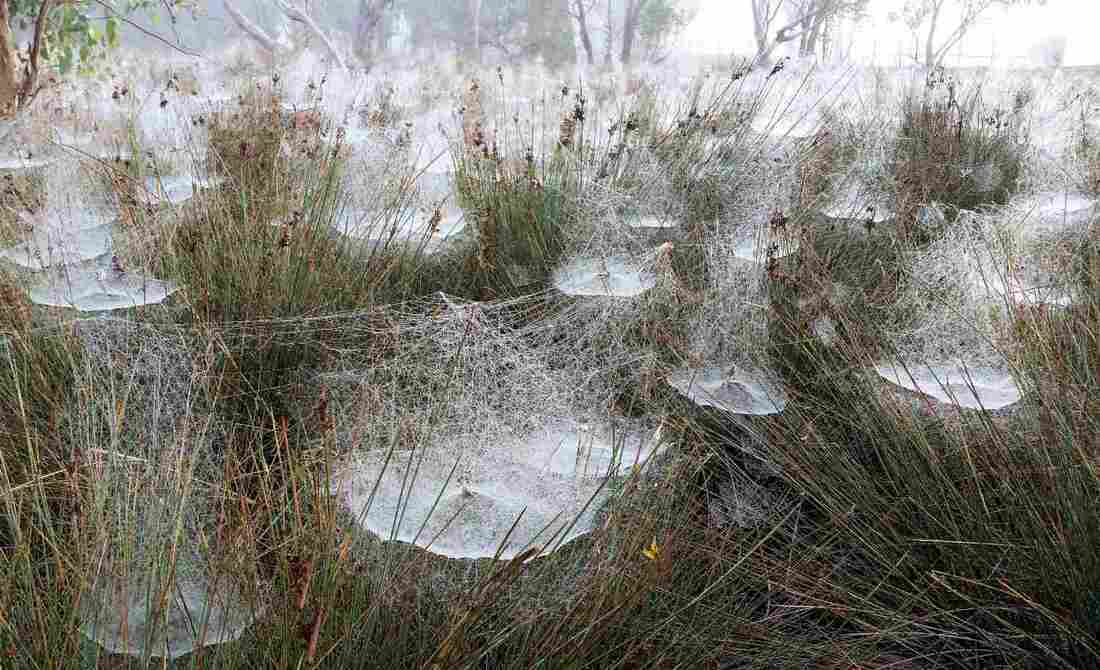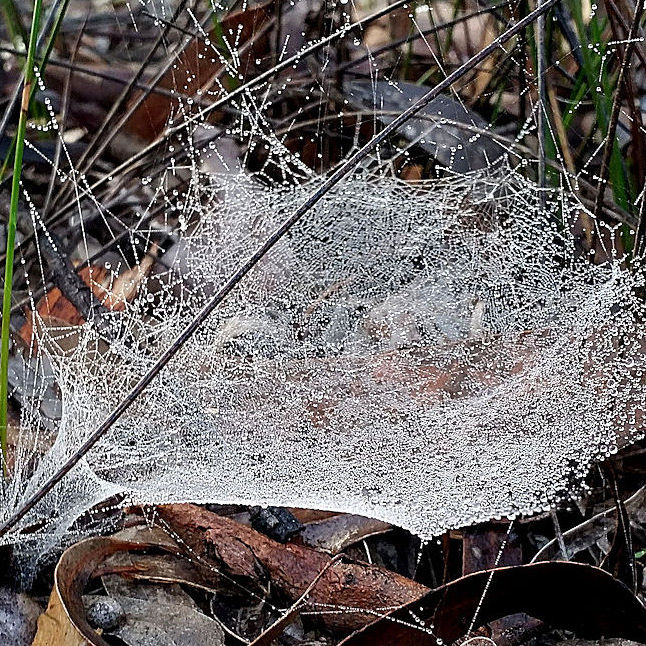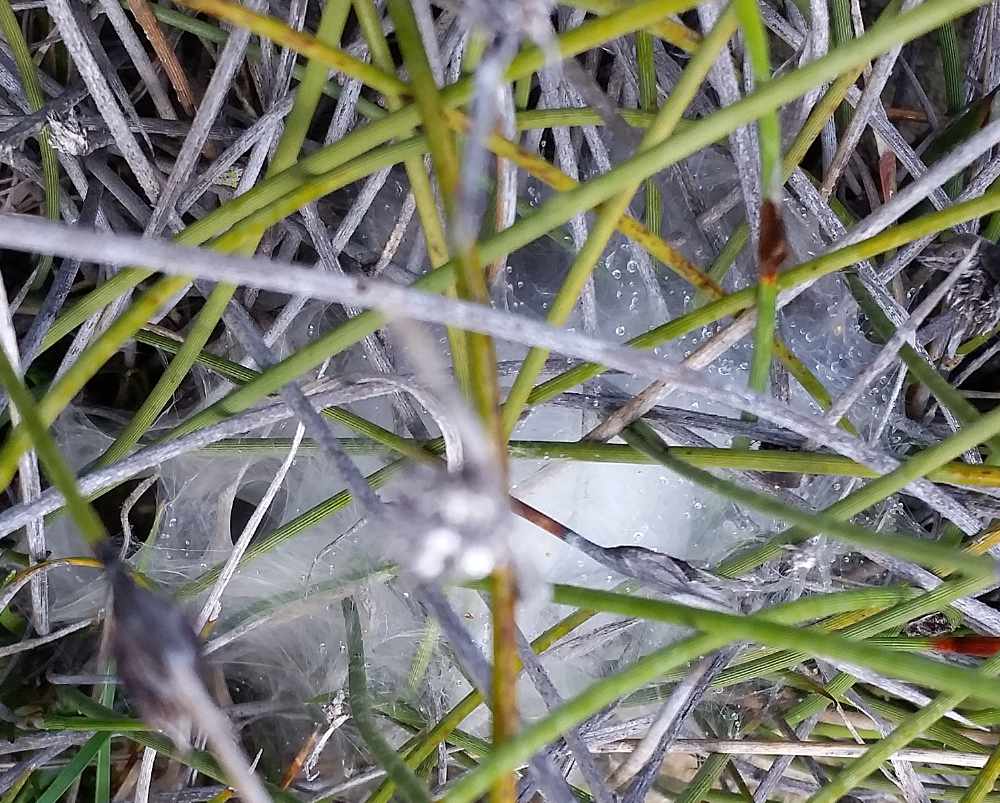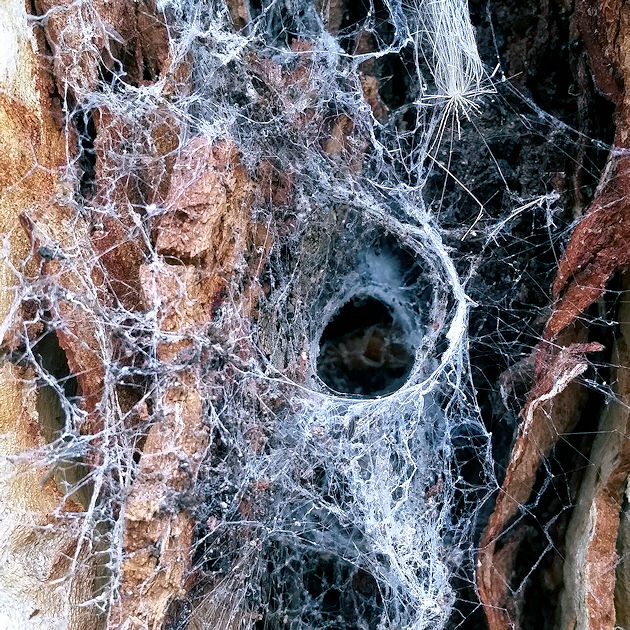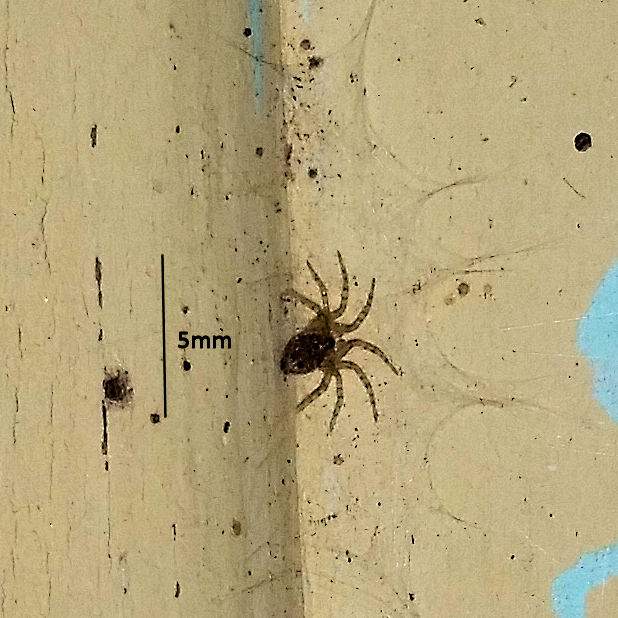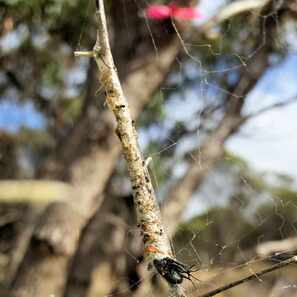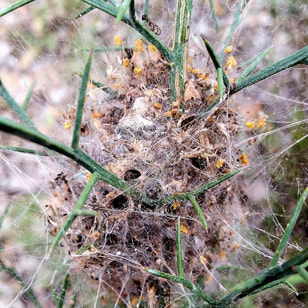Spider Identification Tool - Is the spider in a particular web or burrow, or hiding or running free
Often web type and location give you a clue to broad identity, but ones found hiding or wandering around in the evening may still be web types that hide in the day or males looking for a mate (that's life!). Click on blue hyperlinks below for relevant spider images and information.
1 SPIDERS HIDING OR HUNTING IN FOLIAGE DURING THE DAY
- Orb web spiders that build webs at night, eat them each morning and hide during the day in a retreat: Eriophera and Araneus sp. (Garden orb weavers), Backobourkia sp (Desert orb weavers); Dolophones (Wrap-around spiders).
- Crab and Lynx spiders
- Bird dropping spider
- Jumping spiders
3 SPIDERS WANDERING AROUND OR HIDING ON OR UNDER THE TRUNK, BARK OR STONES (may be in dense round or sac-like resting webs)
- Trapdoor spider males or Red and Black spider males looking for a mate at night
- Wolf spiders and spiders with a similar shape
- Huntsman spiders and spiders with a similar shape
- White-tail spiders and spiders with a similar shape
- Jumping spiders.
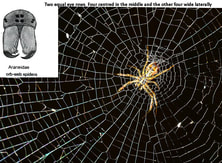 Spiral web of thin sticky silk strands
Spiral web of thin sticky silk strands
4 ORB WEBS: mainly vertical webs that spiral outward on thin strands like spokes on a wheel.
These include:
These include:
- Spiders that remain on the web during the day: Nephila edulis (Golden orb weaver) ; Genus Austricantha (Christmas Spider); Plebs. (Garden or bush orb weavers); Cyclosa . (Garbage line spiders); Argiope (St Andrews Cross and Teardrop spiders); Phonognantha . (Leaf-curling Spider).
- Spiders that build webs at night, eat them each morning and hide during the day in a retreat: Eriophera and Araneus sp. (Garden orb weavers), Backobourkia sp (Desert Orb Weavers); Dolophones (Wrap-around Spiders)
|
5 TANGLE WEB SPIDERS :Sticky messy webs containing a spider in corners, shelves, pots etc at home or under logs, rocks or debris in the bush.
Spider types include
|
7 SHEET WEBS AND WEBS WITH A CONICAL RETREAT : This category has a mixed bag of spiders

